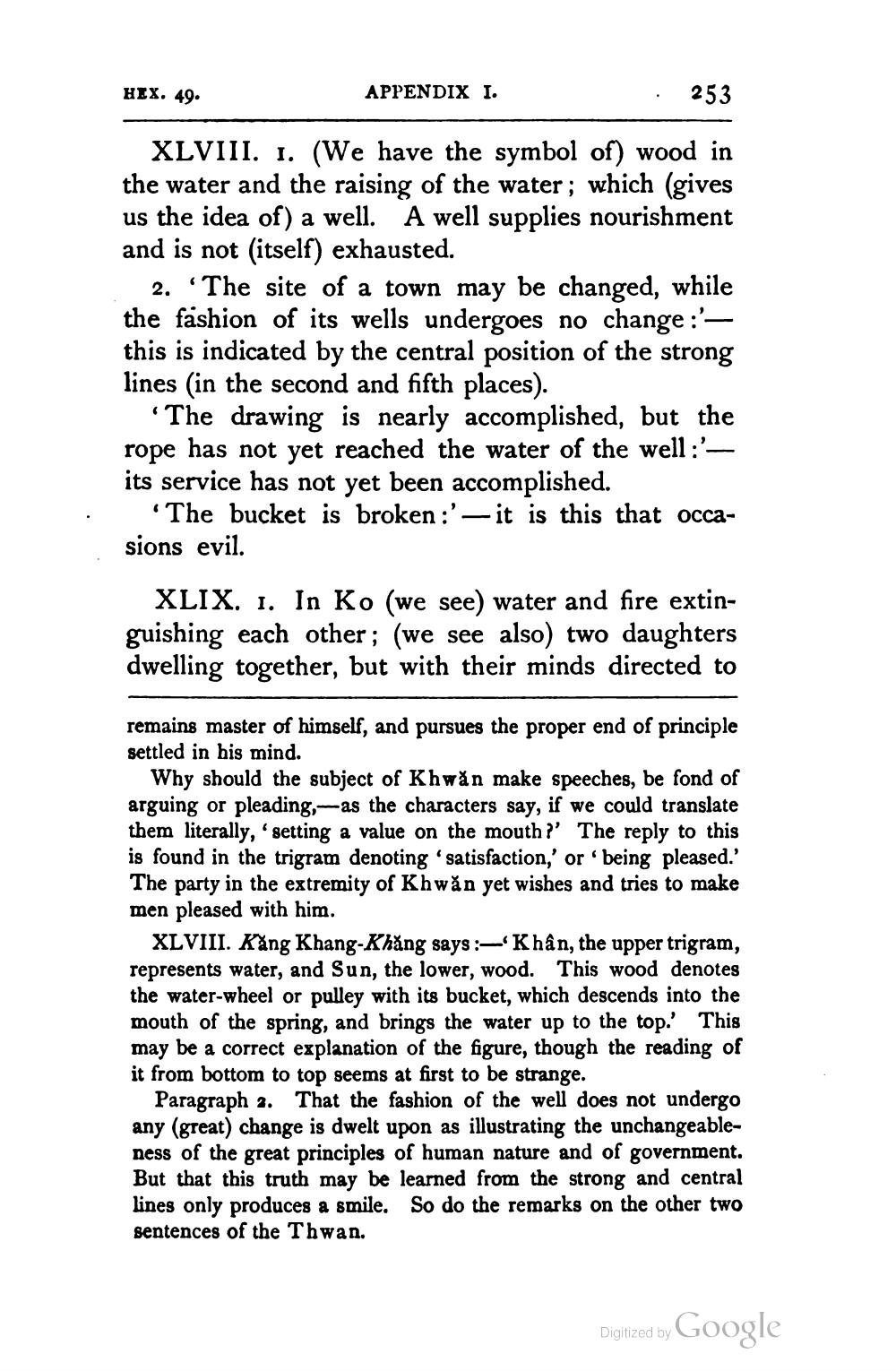________________
253
XLVIII. 1. (We have the symbol of) wood in the water and the raising of the water; which (gives us the idea of) a well. A well supplies nourishment and is not (itself) exhausted.
HEX. 49.
APPENDIX I.
2. The site of a town may be changed, while the fashion of its wells undergoes no change:'this is indicated by the central position of the strong lines (in the second and fifth places).
'The drawing is nearly accomplished, but the rope has not yet reached the water of the well:'its service has not yet been accomplished.
'The bucket is broken:'-it is this that occasions evil.
XLIX. 1. In Ko (we see) water and fire extinguishing each other; (we see also) two daughters dwelling together, but with their minds directed to
remains master of himself, and pursues the proper end of principle settled in his mind.
Why should the subject of Khwǎn make speeches, be fond of arguing or pleading, as the characters say, if we could translate them literally, 'setting a value on the mouth?' The reply to this is found in the trigram denoting 'satisfaction,' or 'being pleased.' The party in the extremity of Khwǎn yet wishes and tries to make men pleased with him.
XLVIII. Kăng Khang-Khăng says:- Khân, the upper trigram, represents water, and Sun, the lower, wood. This wood denotes the water-wheel or pulley with its bucket, which descends into the mouth of the spring, and brings the water up to the top.' This may be a correct explanation of the figure, though the reading of it from bottom to top seems at first to be strange.
Paragraph 2. That the fashion of the well does not undergo any (great) change is dwelt upon as illustrating the unchangeableness of the great principles of human nature and of government. But that this truth may be learned from the strong and central lines only produces a smile. So do the remarks on the other two sentences of the Thwan.
Digitized by
Google




